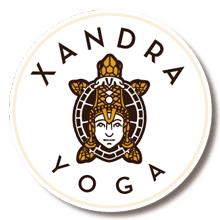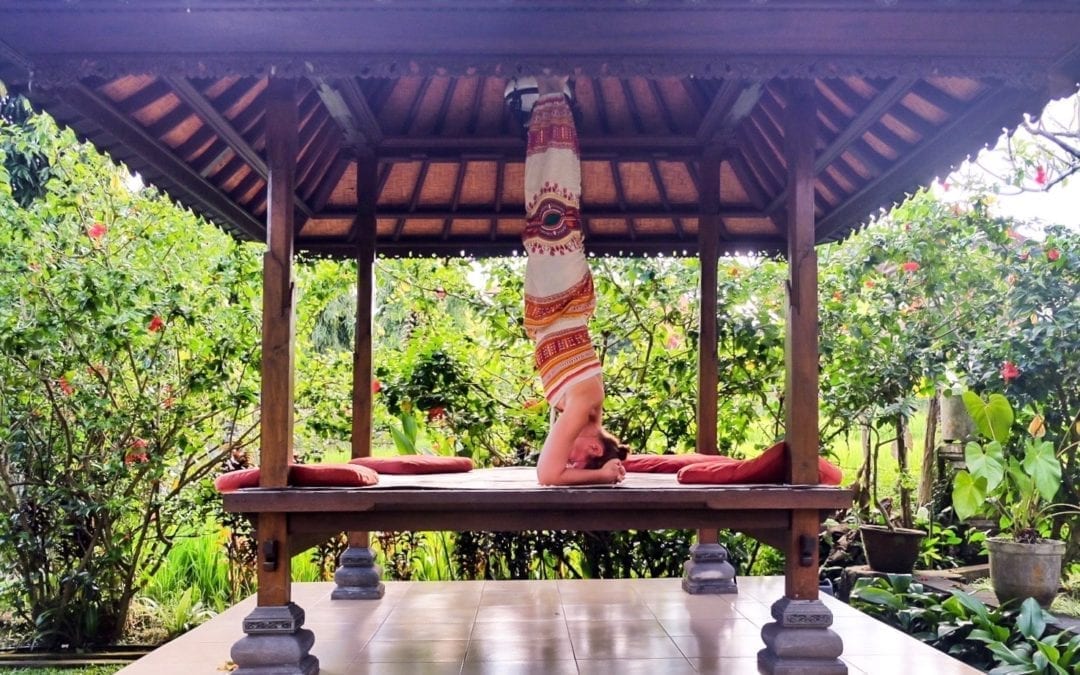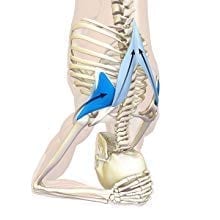Shirsha – Head, Asana – Posture
Shirshasana is an inversion. As a general rule it will be practiced at the end of an asana practice.
However in Sivananda style, after the 12 rounds of Suraya Namaskara, it comes first into the practice.
Is the weight on the head?
That is the first question and the primal fear arising from that particular asana. The answer is no, there is no weight on the head, there is no reason to collapse the cervical spine. As per some tradition the teacher should be able to place a 5 rupees coins between the head and the floor. Also sometimes it is mentioned that the gap between the head and the floor should be big enough to place a piece of paper.
The structure that we be holding the posture, outside of the breathing, is the scapular belt.
How to place the hands on the floor
Your base, root will be the wrist, hands and finger on the mat.
Here is the full detail on how to place the hands: http://practicingashtanga.com/sirsasana/
Wrists have to be strong enough and straight, they should not bend at all. Then the strength will come on the forearms pushing against the floor.
Scapular belt
It is made of 7 bones : scapula, clavicles, sternum, upper end of the humerus.
Major muscles activated will be the trapezius and the rhomboids in order to stabilise the shoulder blade. That is the first thing to do, stabilising the structure. Shoulder blade should be able to glide down along the spine in order to free the neck as much as possible. We should avoid any compression toward the cervical spine.
Therefore in order to build the architecture of the posture we should:
- push against the floor from after wrapping the hands around the crown of the head;
- have the sensation of stretching the skin of the armpits, lengthening the triceps muscle;
- by the action of « pushing against the floor », lengthening the skin of the chest using the pressure of the small and big pectoral muscle.
Once the base is all set up, bring the crown of the skull on the mat, extend the legs and shift the pelvis above the shoulders. Hands should be place toward the occiput, legs should be strong and straight.
How to prepare Shirshasana
° Chaturanga Dandasana reinforcing the shoulders,
° Urdva Mukha Svanasana gliding shoulder blade down along the spine,
° Adho Mukha Svanasana hamstrings flexibility,
° Uttitha Hasta Padangustasana for the hips flexors,
° Navasana for the core muscles and hips flexors,
° Gomukasana opening the shoulder and stretching the triceps,
° Dolphin stretch to reinforce the all body and got the feeling of lifting up from the chest.
What you should not do
Throwing the leg toward the ceiling, sky, wall, teacher or wherever you want to throw the leg. You should not throw them at all. Keep control of your body.
Using the wal all the times. The wall can become your worst enemy. I have seem most students hurting themselves using the wall continuously than others.
The wall is not helping you to build the structure your body needs. The wall is however helping your ego to feel good « hey look, my legs are up, my head is down, yepi!! »….
My advice is to build your asana, build your body, your structure, root yourself on the mat, be strong with your upper body and core muscles, take your time, there is no emergency of doing Shirshasana. You will not become enlightened if your can do Shirshasana, you will not become a better person. Just take your time.
What you should do
If the first fear is to fall, then start to learn how to fall. Falling is good, and if you fall nicely it won’t hurt you at all.
Once you are getting ready to do Shirshasana, keep the scapular belt active.
- Bring the pelvis upward toward the ceiling,
- Legs straight, walk your feet toward your face.
- You will feel at one point the body weight coming toward your shoulders; keep going.
- Hug the right knee toward your chest.
- Hug the left knee toward your chest.
- Once you find your balance, start lengthening both legs toward the ceiling.
Case 1 – hugging one knee to the chest but not being able to lift the other one.
- Bring the right leg down,
- Hugh the left knee, bring it down
- Then alternate the movement until you find your balance with both knees.
Case 2 – hugging both knees but pain in the cervical spine
- If you feel any discomfort toward the cervical spine, that is the indication your are not pushing with your arms.
- Bring both legs down.
- Stretch both legs, feet on the floor, pelvis up and start pushing with your upper body agains the floor.
- Until you feel the body weight going on your shoulders, triceps, wrists, continue to work.
- Keep as much as possible a flat back.
- Keep smiling, nothing is impossible.
Lifting both legs at the same time
That is only when you are confortable in Shirshasana after hugging your knees.
Once you start lifting both legs up, you will had more flavour to that posture. Core muscle will be highly solicited.
Same routine as before:
- Build your structure with the crown of your head on the mat,
- Engage the scapular belt,
- Stretched out the legs,
- Walk toward your face, pelvis going above your shoulders,
- Once you fill the little tilt, start anterior tilt the pelvis, using the core muscles,
- Lengthening and squeezing both legs at the same time toward the sky.
Even though the anterior tilt will be largely used to bring both legs up, we should not « compensate » with it in order to avoid the misalignment of the pelvis versus the thoracic cage. The alignment should be ankles to knees – same ligne, knees to pelvis – same ligne, pelvis to ribs – same ligne, free neck, shoulder blade fully stable and down toward the spine, body weight on the forearms, shoulders, elbows.
How to dismount
It all vary from the technique you have bee used to go in 😉
If you have started hugging one knee to another, then bend a the knees and bring both legs down.
If you have started with both legs stretched then the motion will start by moving from the anterior tilt of the pelvis in order to bring them down.
It will be better to avoid the throw the legs down and taking the risk of breaking the big toes, you should be capable of controlling your movement through the breathing.
In the case you can not bring both limbs together then bring one leg at a time on the floor.
Contre posture
Balasana or child pose.
Contraindication
Cervical hernia and glaucome – even though I have seen students with those pathology perfectly doing Shirshasana without any problem. I think the most important is to listen to our body.
Menstruation – It is advisable not do any inversion the first 48 hours of the bleeding.
Pregnancy – It depends of the practitioner, if the person is a regular one then she will know exactly when and what to do, if that is someone coming to Yoga because she is pregnant then it is not advisable.
Gossips
I have heard one teacher saying that woman breastfeeding should not do Shirshasana, as it will turn the milk bad…..
I hope my translation is good…. When I heard it I just wanted to laugh so bad, knowing that it is impossible that the breast milk « turn bad », while still in the breast, as the woman body is producing it continuously…. I then asked the teacher from where the source was coming, but he never told….
There is a legend underlying that if you do Shirshasana you can become nuts…
I do agree, at some point if you are staying one hour or so, it might be dangerous, too much blood toward the head is not always a good idea. However if you are doing it and staying for 5 to 10 breathes, you won’t get crazy, you won’t loose your brain.
Shirshasana is extremely dangerous for cervicale spine and there is a risk of becoming paraplegic….
It is of course understood that if the student has no notion on « how to », no muscles, no structure, there is absolutely a possibility of hurting the cervical spine. However in that case the problem is:
- coming from the teacher who will allow the student to do something for which he/she is not ready,
- from a bad teaching with bad instructions,
- or simply from someone who has absolutely no clue of what he/she is doing, does not care of any instructions and still try to do it, the way he/she wants to do it.
Therefore, I used to say that the problem is not coming from the posture itself.
The problem is located between the floor and the yoga mat.
My personal advice: Yoga Teachers are not scientists and not holding the absolute truth on everything. Do not get influenced. Yoga Teachers are normal people, and not all of them have a good anatomy knowledge. Neither they are more open minded than any others human being. Therefore wether your teacher is wearing a dhoti, mala, bindi, fancy legging, they are not enlightened and they are not always right. Do not swallow all their words without thinking if it is right or wrong.
Have a good practice!
Namaste,



